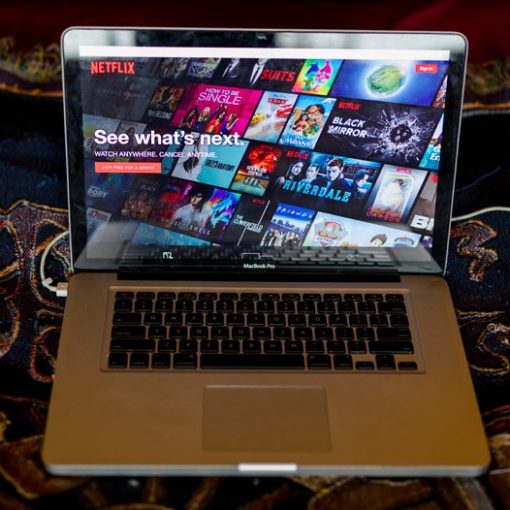Some stocks in my Gehman Capital Solutions portfolio have moved up substantially since March, though the model’s overall performance is down over the last year. In my opinion, my small cap “story” stocks will soon provide an opportunity to earn a profit. I personally believe that the upside prices can be just as dynamic as the moves have been to the downside.
EZChip
EZChip Semiconductor (EZCH) is my largest holding and has the most potential, in my opinion. In March, 2013, the company reported good Q4, 2012 earnings but lowered projected earnings going forward.
Following the Q4 conference call, a number of extremely bearish articles were published that I do not believe reflect the investment facts for the company. EZCH Chairman, Eli Fruckter, in the Q1, 2013 conference call on May 8, 2013, confirmed that EZCH’s business was continuing on a strong upward path.
Cisco (CSCO), EZCH’s largest customer, is expected to increase business in 2013 over 2012. Huawei, which announced last quarter that they would develop their own “lower end in-house solution” processor, placed production orders for the “high end NP-4 solution.” In addition, all other NP-4 customers placed production orders.
I believe that future products are being developed that will help insure EZCH’s growth for many years. In my opinion, the NP-5 should sample this month and is expected to go into production next year. The company says it expects “substantially all NP-4 customers will select the NP-5 for their next generation platforms that sells for a higher price and will sell for approximately eight years.”
EZCH has also announced the NPS, a revolutionary Network Processor for Smart networks that will perform tasks in new markets with new customers that people did not even envision a few years ago. EZCH is actively marketing the NPS “to all routing, data center, security, load balancing and SDN companies,” according to the company. This product will double EZCH’s served customer base in 2016, the company projects. SDN companies are “Software-Defined Networks.” Juniper Networks (JNPR) is making a major push as a SDN. (Juniper stopped using EZCH new products in 2009.)
Is it possible that the NPS will be the re-entry to Juniper for new EZCH products? Juniper’s business was expected to steadily decline, but (1) orders increased in the first quarter, (2) it is possible that sales will “increase in 2013 over 2012 and (3) Eli said that NP-2 sales could continue beyond 2013.
This is amazing because Juniper was EZCH’s largest customer in 2006 (using the NP-2 processor). In 2009, Juniper announced they would develop their proprietary “chip set” and would not use EZCH processors in their new routers. Surprising even to EZCH is that Juniper (7 years later) is forced to buy the old processors to increase the capacity of old routers to keep up with the exceptional growth in internet traffic.
EZCH’s new NP-4 has much greater capabilities than the NP-2 and the future NP-5 has even greater capabilities. Juniper is stuck buying the old NP-2 because their new routers only use their in-house “trio chip set.” Will Juniper have to start buying the new EZCH processors?
In the Q1 conference call, Eli said “the growth rate now depends on our customers’ success with their NP-4 based platforms and on carrier spending.” The good news is that carrier spending is showing signs of growing.
On June 6, 2013, the flyonthe wall.com reported that EZCH “stated that its business was improving since it reported its first quarter results on May 8“. Announcements are being made regularly by companies such as Cisco, Juniper, Ciena, ATT and Verizon that carrier spending on routers is growing.
EZCH has been generating significant cash for years, according to company financial reports. In Q1, ’13, the cash position was $174.3 million ($6.3 million cash added in Q1). There is no debt. “Gross margin on a non-GAAP basis for the quarter reached 81% with non-GAAP net income of $6.7 million for the quarter, representing 44% non-GAAP net income margin,” according to company executives.
In the Q1’13 conference call, Eli announced that EZCH will sell their new NIS processor directly to accounts and will not have to market through an intermediary. Cash per Non-GAAP diluted share (28,868,370 weighted average) as of March 31, 2013 was $6.04.
In the Q4 ’12 conference call, Eli Fruchter lowered his EZCH’s annual growth projection to 2016 from about 44% to about 30% because carrier spending was growing slowly and the future revenues for Huawei were uncertain. Eli said he would increase these projections of conditions warranted.
Carriers are increasing spending, Huawei has placed production orders and EZCH growth could spike. Will Eli increase growth projections at the next conference call?
On June 6, 2013, Eli confirmed his projected revenue for Q2, 2013 at $16.5 million. I do not have enough information to project revenue and earnings for the year. I do have a conviction that earnings will ramp up sharply within the year.
Anadigics
It doesn’t take much, in my opinion, to get excited about Anadigics (ANAD). The company grossed $26.4 million comprised of $16.3 million in cellular; $5.3 million in Infrastructure and $4.8 million in Wi-Fi. However, Ron Michels, Chairman, President and CFO and Terry Callagher, VP & CFO said repeatedly that they expect the company to be break-even (projected revenue in the area of $45 million) in the Q4, 2013.
Ron Michels said in a recent conference call: “We’re happy to see the backlog look so good as it does and it looks like Q3 is going to look good. So I think we’re very much on target to be able to meet those goals (breakeven) by the end of the year.”
Three drivers of future growth are (1) rapid growth of Wi-Fi connectivity products (2)acceleration of data consumption and adoption of 3G and 4G connectivity in wireless mobile devices and (3) expansion of infrastructure networks to support greater bandwidth wireless data use, according to executives.
According to Terry Callagher: “Wi-Fi is the prime drive so we see moving upwards even from the 18% that it was in Q1 to a larger piece of the revenues may be upwards of 30% or something like that.” Cellular will probably see single-digit percentage growth and infrastructure will show a little temporary softness. Wi-Fi is the most exciting product, he said.
ANAD products have always been exceptional, in our opinion, but it appears that the company has found some sweet spots now. One example is the 3G (high end) mobile phone market. ANAD has multiple design wins with a “… clever architecture that has switches and power amplifiers monolithically combined and we’re getting efficiency levels that are just phenomenal with this particular product,” according to the executive.
ANAD had 50.9 million in cash on March 30, 2013. The company is operating at about 65% capacity utilization, but is so confident of their growth potential that they raised about $20 million in March, 2013 and continue to upgrade production capacity.
In March, 2013, I said that ANAD is a high risk-high reward situation. In my opinions, the stock is still subject to gyrations, but I believe it now appears that the risk is getting less and the potential for significant profit is getting closer.
Crailar Technologies
Crailar (CRLRF) produces bast fibers, cellulose pulp and their by-products from flax, hemp and other bast fibers. Their unique process creates soft fabrics from hard, cheap, materials that substitute for cotton cloth at much cheaper prices.
The company has arranged long term financing, is starting production from their new plant and has long term contracts with Levi Strauss Jeans and other companies.
Like any new company, there will be “peaks and valleys.” When the new factory started production, we thought we were on the upward path. Turns out the manufacturing process requires an additional step that will require additional financing.
DragonWave
Last year, DragonWave (DRWI) purchased its largest customer, Nokia Siemens Networks (NSN) microwave radio group. NSN was significantly larger than DRWI, and it was losing money. It will take time for the new organization to sort out integration problems.
Progress has been made, however. In the May 9, 2012 conference call, Peter Allen, Chief Executive Officer, President and Director said that “our expense base has been reduced by 40% since the middle of last year … with more reductions expected.” Major adjustments have been made in the manufacturing area.
A “strong alignment in the sales environment is now established. Nokia Siemens is now focused totally on mobile broadband and is “committed to offering customers the best mobile broadband solutions possible, including the microwave that DragonWave brings to the table. There’s a strong alignment between the two companies now on the approach of sales push, business model and incentives for the microwave business as a part of the mobile broadband.”
Several years ago, DragonWave concentrated in North America, now there is a strong international push. Peter Allen said that the new company is focused on reaching cash flow breakeven in a couple of quarters – that must be achieved through revenue growth. There are risks, but Peter sounded reasonably assured that the company can increase sales, or make other adjustments to make sure that breakeven operations are achieved.
Finisar
On the Q3, 2013 Conference call, March 7, 2013, Jerry S. Rawls, Finisar (FNSR) Co-Founder and now Chairman of the Board and Co-Principal Executive Officer, said:
“Finisar is a company that is driven primarily by growth in demand for bandwidth by enterprises and service providers. A demand for bandwidth is projected to grow virtually forever … Over time carrier spending must increase to provide more bandwidth capacity. Finisar is uniquely positioned with our broad product line, extensive customer engagements, profitable vertically integrated business model and strong balance sheet to capitalize on this market opportunity.”
I met Jerry Rawls at a conference over ten years ago. Finisar was my largest stock position. With my wife standing next to me, I told him that my success was extremely dependent on his success at Finisar. He stated, that he had more riding on the company than I did – he was very optimistic about Finisar’s future success.
Execution and development of the business has never been a problem for Finisar. The difficulty has always been that Finisar has high fixed costs. Their competitors put pressure on pricing, so Finisar needs volume sales to make significant profits.
The margin on different products is also important. In the conference call, Jerry Rawls said “we clearly have a difference in the margin profiles of products … New higher performance products generally carry higher margins ….generally, datacom products have higher margins than telecom products.”
Finisar’s profits are extremely dependent on telecom. On the Q3 conference call, Eitan Gertel, CEO and Director, said “we’re expecting a recovery in telecom . We just can’t point to the exact quarter when it happens…. We are … more ready than we have ever been…So we’ll wait for that to happen.”
Jerry’s description of the business for 2013 and 2014 is extremely interesting. In Q3, 2012, data center business was 62% of Finisar’s revenue and he expects business to grow at 10% this year.
“The question is will telecom spending really come back in 2013, or is it ..2014 – as many people are predicting now. (bold added) The reality is many of the service providers in the world are beyond that point in their network loading that they should be adding capacity. And so they are going to be addressing the bottlenecks in the networks. The real money for the optics industry comes from when there’s change in architecture, upgrades , upgrades in the speeds and the network topology that’s deployed by these service providers…in 2014, all of these advanced LTE architectures are supposed to start rolling out… it should be a very exciting time for optics.”
These are the reasons that I own Finisar. Jerry Rawls cannot tell us when the ramp is going to start – but it has to happen. I will not try to guess when the ramp is coming, but I hope to own the stock when it happens.
Lattice Semiconductor
Lattice Semiconductor Corporation (LSCC) made a decision to concentrate on “leveraging their expertise in the low and ultra-low density, low power programmable market “ in the wireless, worldwide smartphone market. 2012 was a transition year for the company, but momentum continues to build in consumer and non-consumer areas.
In Q1, 2013, the company reported revenue at the high end of upwardly revised guidance and well above original guidance. The positive news was that revenue from new products was up 48% quarter-on-quarter. Mainstream products were down approximately 4% and revenue from mature products was down 17%.
The lead time on consumer product is 6 to 9 months. LSCC must work to access the largest OEM accounts and diversify products and customers. Because of volatility in consumer sales, the company continued to reduce operating expenses. They also continue to retire shares.
In closing comments, Darin Billerbeck, President and CEO points out that LSCC is starting to see the benefits of consumer penetration, but they are “ still one of the biggest communication suppliers as far as the control plane. There is still a broad base of products they supply… We have a lot of benefit in our other products and a lot of products that are lining up quite well for the future.”
I believe the wind is in the sails for LSCC. I will watch closely. I think the stock can go much higher, but we don’t want to overstay the mark.
MicroVision
MicroVision (MVIS) was one of the first micro-cap stocks I purchased. The company develops ultra-miniature projection display technology. The most exciting development, among many, is the mass production of an artificial green laser that allows MVIS products to be offered at a reasonable price.
MVIS has developed and patented technological products. For years, they had many revolutionary products that kept pulling the company in different directions. I met Alexander Tokman 2005, shortly after he was hired to manage the company. After an initial analysis, he decided to focus the company’s efforts on a limited number of products – mostly concentrating on the Pico projector.
The Pico projector (the size of a half dollar) can project an image two feet or 20 feet in perfect focus. The technology uses lasers. Only recently was a green laser available to be mass produced at a reasonable price.
MVIS introduced a feature “called Touch – Interactive Touch. So you basically can display an image and at the same time use your fingers to articulate information in the image.” For example, MVIS can project a keyboard from a Smartphone, and then the consumer can enter information to the Smartphone from the image of the keyboard.
On April 3, 2013, MVIS announced a development agreement with a Fortune Global 100 company that included an upfront payment of $4.6 million in fees. “The companies have begun commercial negotiations with the expectation that licensing and component supply agreements would constitute the next stage of engagement leading to the OEMs introduction of commercial products incorporating PicoP (MVIS) display technology,” according to MicroVision.
MVIS has shipped over 50 samples of their products to consumer product and automobile manufacturers. With the first agreement signed, MVIS is “making solid progress in negotiations with several other customers that have the following characteristics: (1) Must be a blue chip company; (2) must have a strong business structure – with multiple sources of revenue – software and hardware; and (3) must have a commitment to MVIS.
Ideally, they would share risk with MVIS. The customer’s and MVIS’s expectations must be compatible and MicroVision will negotiate for advance revenues in the form of license fees before the product comes to market.
MVIS has made giant strides. They have patents on the highest quality Pico projectors that can be delivered at reasonable prices. The market for Pico Projectors alone, aside from other products, is projected to be in the 100’s of millions.
Every small company must solve problems, one step at a time. Alexander Tokman, President and CEO, says that MVIS must now focus on developing their supply chain of products. It may take some time, but I believe this stock is now on the way to making a contribution to our profits.
QuickLogic
QuickLogic (QUIK), “the leader in low-power Customer Specific Standard Products (CSSPs) is an exciting investment. The company develops sophisticated electronic components -concentrating on mobile devices. Historically, they have developed specialized products, but now are concentrating on developing “niche” products for mass production.
I believe that QUIK will be successful in accomplishing their goals. Now we must wait for the successful completion of their journey. I expect the stock price to trade higher by year end.
Tower Semiconductors
Tower Semiconductors (TSEM) fabricates chips. They do not use “cutting edge” technology, but have been buying old equipment and manufacturing facilities at cheap prices and have been signing contracts with multiple tier-one customers throughout the world.
Russell C. Ellwanger, CEO and Chairman of Tower Semiconductor USAS and Chairman of Jazz Technologies, Inc. reported lowered revenue from Q1, 2013, but said these were short term and in line with supply agreement with Micron Technology, which sold its plant in Nishiwaki, Japan to TowerJazz in 2011. TSEM expects to replace the lower margin sales to Micron with higher margin business going forward. The company projects Q2, 2013 sequential mid-range growth of nearly 13%.
Ellwanger projected quarter-over-quarter growth throughout the year which he said would be meaningful. “In the second quarter we’re moving close to our forecasted numbers and the third quarter promises to hit forecasted numbers. That’s a very promising sign,” he said.
The stock trades very cheaply because the company issued a large amount of convertible bonds (capital notes) to avoid bankruptcy years ago. That situation is getting resolved as the Israel Corporation converted its notes to shares and stated that the conversion was in line with its long-term investment strategy in TowerJazz (39% strategic ownership) and it had no intention to trade or sell the shares.
On June 9, 2013, TowerJazz announced a rights offering of common stock and warrants that will help clean up the balance sheet. The offering could keep the stock price from moving up in the short term. I believe the stock price could move up in late June and July because of the improved projected revenues and better balance sheet.
Towerstream
Towerstream (TWER) now has two segments: Fixed Wireless business – achieved cash flow profitability for the first time in Q1 2013. The second is Hetnets Tower Corp, which is a shared wireless infrastructure and its revenue is derived from advertising and usage-based rental.
Jeffrey M. Thompson, Co-Founder, CEO, President and Director said in the Q1 2013 conference call that “we reached the cash flow positive milestone in the Fixed Wireless business in 4.5 years and believe that we can replicate this success in our Hetnets business over a similar, if not shorter, timeframe.”
TWER owns a very valuable commodity – real estate space on tops of buildings in 12 major cities in the US. They initially delivered fixed-wireless high-speed Internet to businesses, but now are using that same space to sell Wi-Fi and Small Cell sites.
Carriers are now starting to build their Wi-Fi and small-cell platforms – but spending is not growing as fast was thought originally. Hopefully, TWER will close some major contracts soon and the stock will trade higher.
Wave Systems Corp.
Wave Systems Corp. (WAVX) has developed a number of products that enhance security in the transfer of information. They use the “Trusted Computing” model that securely encrypts all data until the device trying to access the data is determined to be secure. Once secure devices are identified, they can operate securely within their closed, encrypted environment.
WAVX is one of the most frustrating stocks that I own. Over 600 million devices, and growing, have the Trusted Computing chip, but WAVX only makes money when the owner of the device pays WAVX for the use of their products.
WAVX, a very small company, has established their position with giants such as Microsoft, HP, Dell, etc. in the Trust Computing network. The Trusted Computing Model is increasingly being promoted for information security.
Even though the company has not closed on major contracts recently, WAVX has been able to sell new issues of common stock to raise money. Some investors have to believe that this company is going to be successful because they keep giving them more money.
Steven K. Sprague, CEO, President and Director continues to say that WAVX is not losing contracts to any competitors, but rather the technology of “Trusted Computing” is slow to be accepted. There is an increasing amount of “smoke” arising from the Trusted Computing technology. Hopefully, the fire will start soon and the adoption rate will speed up. WAVX is one of my highest potential stocks, but we need Trusted Computing technology to be adopted and users to take advantage of WAVX’s software products.
XOMA
XOMA Corp. (XOMA) develops drugs. The following tests are being conducted in various stages Gevokizumab – the first non-antibiotic treatment for acne in over 15 years. (moderate to severe acne patients) Gevokizumab – testing in erosive osteoarthritis of the hand and in inflammatory non-infectious sceritis.
John Varian, CEO said in their conference call reporting Q1, 2013 results, that “I believe strongly that we are making great strides in an important path. They will build XOMA into a strong company built on gevokizumab. With the success and at least one of the indications we are studying and a commercial launch here in the U.S., we have the opportunity to make XOMA the success we collectively envision. We appreciate your participation to this effort. We are off to a good start in 2013, and we look forward to sharing the top line results from the EOA study with you around Labor Day.”
The investments discussed are held in client accounts as of May 31, 2013. These investments may or may not be currently held in client accounts. The reader should not assume that any investments identified were or will be profitable or that any investment recommendations or investment decisions we make in the future will be profitable. Certain information contained in this presentation is based upon forward-looking statements, information and opinions, including descriptions of anticipated market changes and expectations of future activity. The manager believes that such statements, information and opinions are based upon reasonable estimates and assumptions. However, forward-looking statements, information and opinions are inherently uncertain and actual events or results may differ materially from those reflected in the forward-looking statements.




